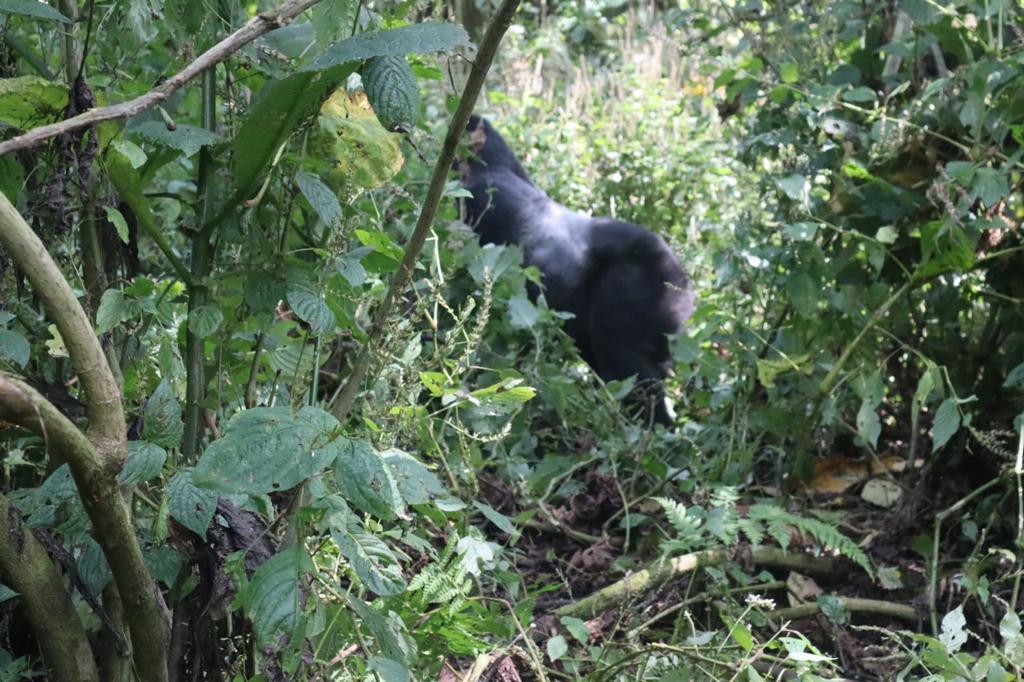ABOUT THE PARK
Size: 33.7km2, making it Uganda’s smallest National Park.
The park takes its name from “Gahinga” – the local word for the piles of volcanic stones cleared from farmland at the foot of the volcanoes.
The British administration declared the area a game sanctuary in 1930; it was gazetted as a National Park in 1991.
Mgahinga has one habituated transboundary gorilla group.
The Batwa were self-sufficient – and visitors can see how during a fascinating tour with a Batwa guide to learn the secrets of the forest.
Mgahinga Gorilla National Park sits high in the clouds, at an altitude of between 2,227m and 4,127m. As its name suggests, it was created to protect the rare mountain gorillas that inhabit its dense forests, and it is also an important habitat for the endangered golden monkey.
As well as being important for wildlife, the park also has a huge cultural significance, in particular for the indigenous Batwa pygmies. This tribe of hunter-gatherers was the forest’s “first people”, and their ancient knowledge of its secrets remains unrivaled.
Mgahinga’s most striking features are its three conical, extinct volcanoes, part of the spectacular Virunga Range that lies along the border region of Uganda, Congo, and Rwanda. Mgahinga forms part of the much larger Virunga Conservation Area which includes adjacent parks in these countries. The volcanoes’ slopes contain various ecosystems and are biologically diverse, and their peaks provide a striking backdrop to this gorgeous scenery.
Mgahinga boasts of over 76 mammals which include elephants, giant forest hog, bush pigs,bush back. Buffalos, leopards, A bird checklist of over 180 species including the 14 endemic Albertine rift notably the Kivu ground thrush and turaco.
Where Gold Meets Silver

While gorilla trekking often steals the spotlight, golden monkey trekking in Mgahinga is an equally unforgettable adventure. These playful creatures are smaller and more agile than their gorilla cousins, offering a dynamic and captivating viewing experience. Known for their vibrant golden-orange fur and expressive faces, golden monkeys are highly active, jumping between bamboo stalks and weaving through the forest with incredible speed. This makes for a thrilling experience, as visitors must keep pace with these energetic primates, moving quickly through the forest to keep them in view. Its for their golden colour that they get their name and since the mountain gorilla silver back carries such a reputation then we say “ Gold meets Silver “ in this beautiful park
Golden monkey trekking in Uganda’s Mgahinga Gorilla National Park provides a unique opportunity to encounter one of Africa’s rarest and most striking primates. Located in the beautiful Virunga Mountains, Mgahinga is Uganda’s only park where you can trek to see golden monkeys, making it a one-of-a-kind destination for nature lovers and adventure seekers alike. With dense bamboo forests and stunning volcanic landscapes, Mgahinga offers the perfect backdrop for observing golden monkeys in their natural habitat.
Unlike the limited permits available for gorilla trekking, golden monkey trekking allows for more flexible access, meaning you can incorporate it into your itinerary with ease. The park is home to a healthy population of golden monkeys, with one habituated group dedicated to daily trekking and another for those interested in a more immersive habituation experience alongside researchers. This flexibility makes it easier to explore other parts of the park as well, including gorilla trekking and hiking the scenic volcanic peaks.
Golden monkey trekking is available in two main options:
The classic Golden Monkey Trekking and the Golden Monkey Habituation Experience
.The classic trek is a half-day adventure that begins at 8:00 am and allows for one hour with the monkeys once they are located. This trek offers the perfect mix of excitement and accessibility for most visitors. On the other hand,
The habituation experience provides an extended, four-hour session alongside researchers, offering deeper insights into the monkeys’ behaviors, social structure, and conservation efforts. This activity not only gives visitors an exciting wildlife experience but also plays a significant role in conservation efforts. The trekking and habituation permits contribute to the park’s protection efforts, allowing authorities to maintain this critical habitat and support the communities around it.
For those planning a visit, here’s what to keep in mind: Both golden monkeys and Gorilla permits are issued permits and sold differently for them to be carried out and these are issued by the government body responsible for wild life. Apart from the permits the entrance in the park also carries a different cost all together.



